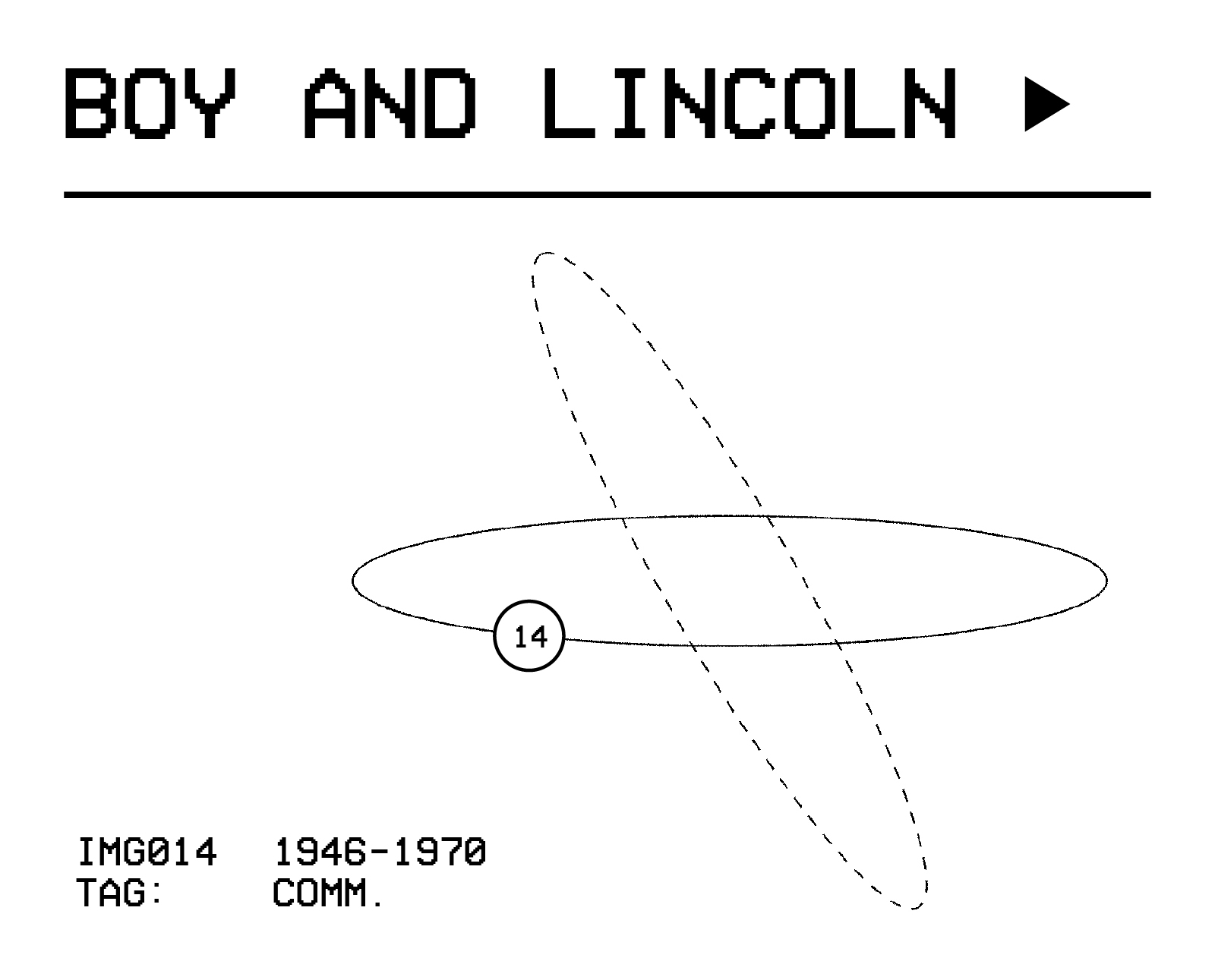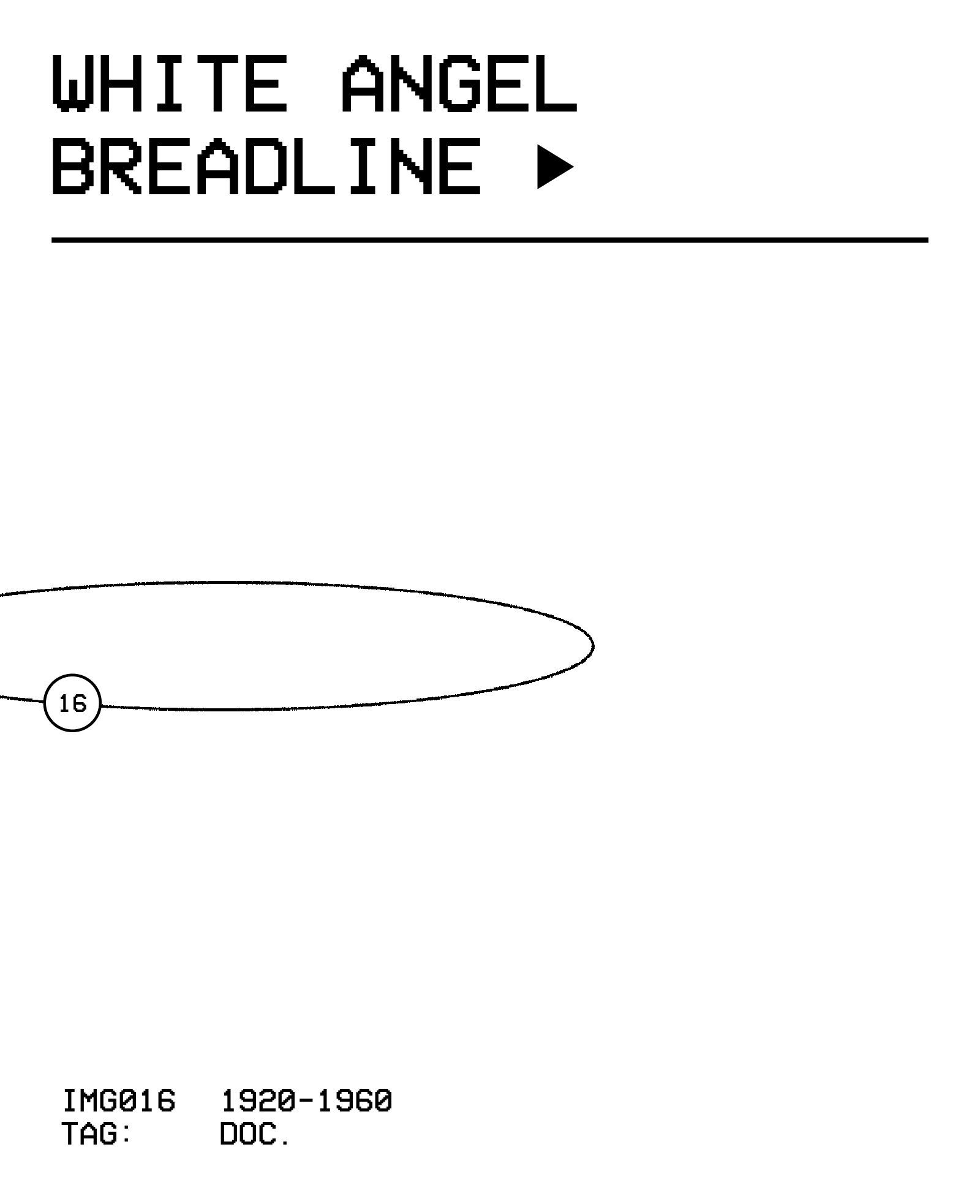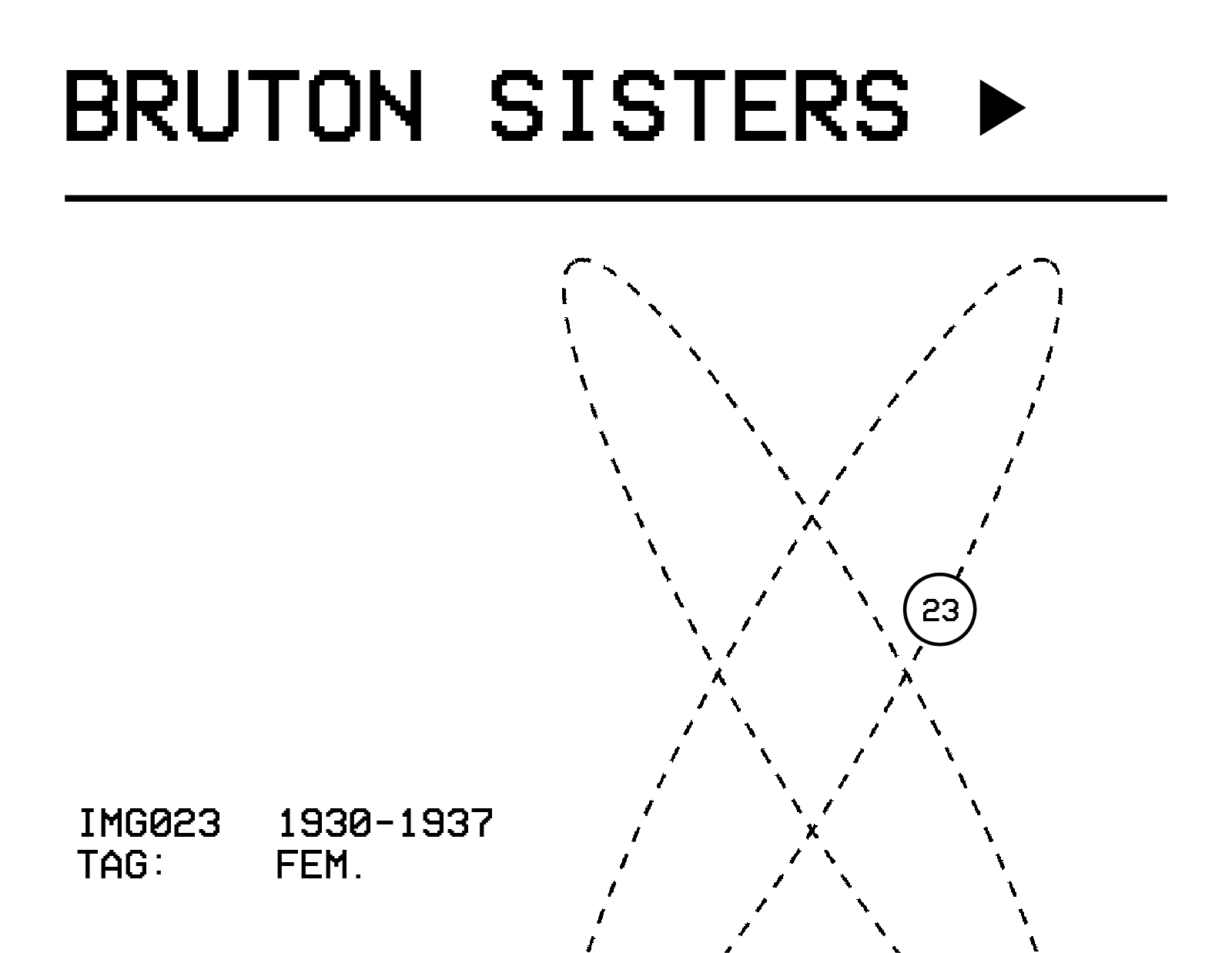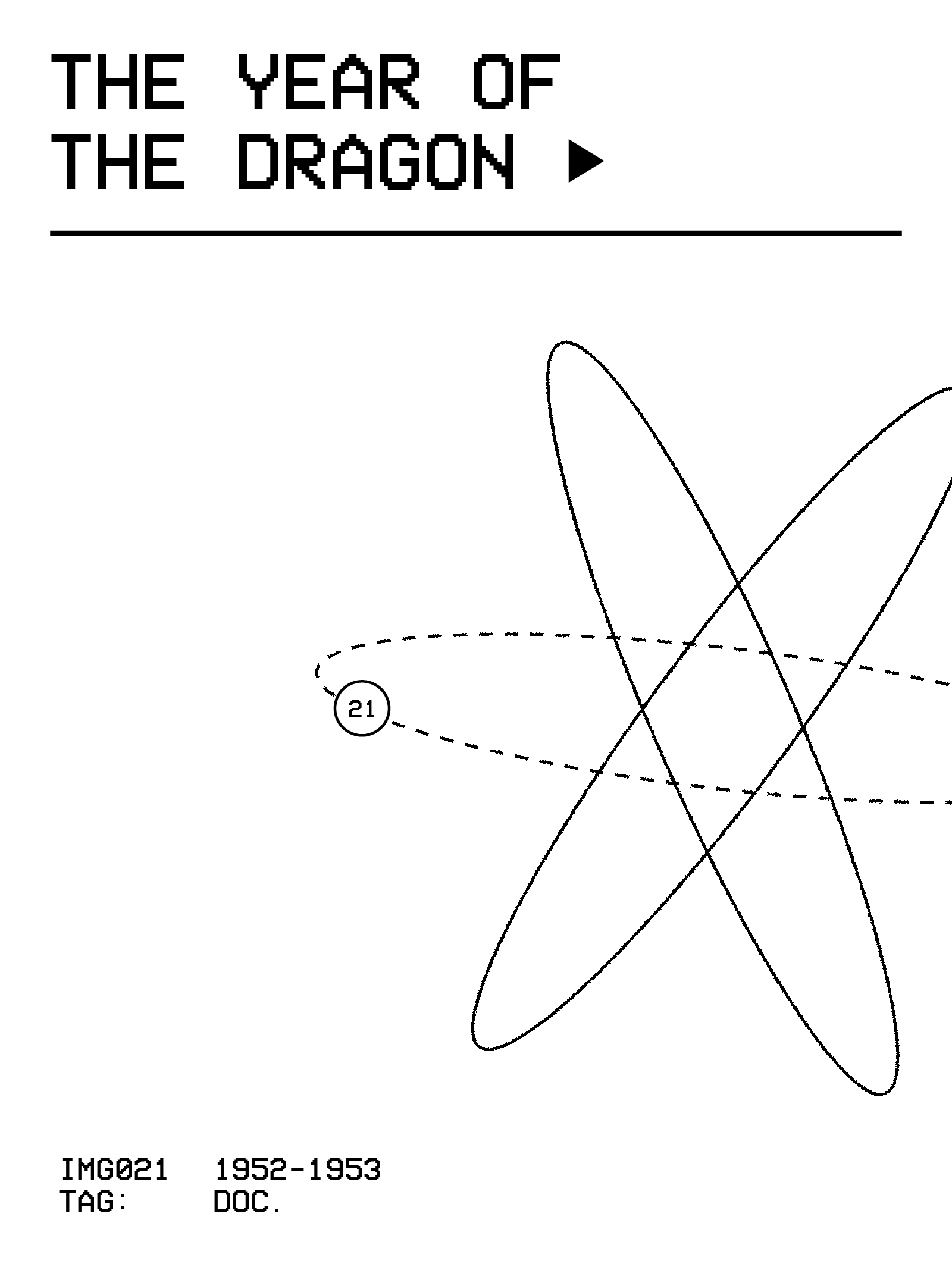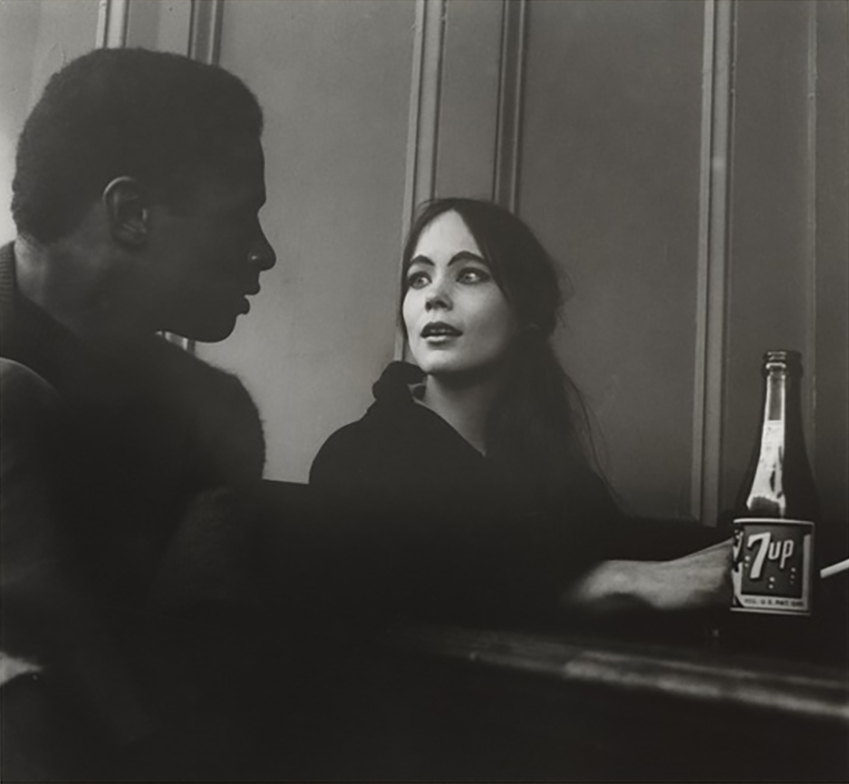
Coffee Gallery
Author
Nina Zurier
Decade
1960s
Tags
Activism Community Photography Poetry Racial Justice
In this 1960 photograph taken by Imogen Cunningham at The Coffee Gallery on Grant Avenue in San Francisco’s North Beach, we see Bob Kaufman and Linda Cherney. Cherney aka Linda Lovely was an actress and artist; she was slightly famous for her role as Ketti, a nightclub waitress and young lover of Gypsy Rose Lee in Gerd Oswald’s cult film Screaming Mimi (1958) starring Anita Ekberg and filmed in San Francisco. The Outlaw Bible of American Poetry (1999) described Bob Kaufman as “a street poet, a people’s poet, a poet’s poet. He was a multi-ethnic poet, an African American poet, a Beat poet, a surrealist poet, a jazz poet, a poète maudit, a New Orleans poet, a San Francisco poet. One of the founding architects and ‘living examples’ of the Beat generation as a literary, historical, and existential phenomenon . . . [but] he has been overshadowed by white Beat writers like Kerouac, Ginsberg and Burroughs.”

Cunningham’s photographs sold well, and this one in particular can be found in many museum and private collections. Linda Lovely is sometimes identified, but not Bob Kaufman. In 1960, when this photograph was taken, a Black man seated with a white woman was highly unusual, and in many states illegal. Kaufman was married to a white woman (Eileen Singe) and was often harassed by the police for appearing in public with her.
Cunningham supported herself and her family with a successful portrait studio and also did commercial work in Hollywood and New York in the 1930s, including work for Vanity Fair, a magazine that would hire SFAI alumna Annie Leibovitz some fifty years later. She was one of the cofounders of Group f/64, which aimed to “define photography as an art form by a simple and direct presentation through purely photographic methods.” She began experimenting with documentary photography in the 1940s and in 1945 her friend and fellow photographer Ansel Adams asked her to be one of the first faculty members in the new fine art photography department at SFAI. She was a beloved teacher and mentor for several decades.
Cunningham supported herself and her family with a successful portrait studio and also did commercial work in Hollywood and New York in the 1930s, including work for Vanity Fair, a magazine that would hire SFAI alumna Annie Leibovitz some fifty years later. She was one of the cofounders of Group f/64, which aimed to “define photography as an art form by a simple and direct presentation through purely photographic methods.” She began experimenting with documentary photography in the 1940s and in 1945 her friend and fellow photographer Ansel Adams asked her to be one of the first faculty members in the new fine art photography department at SFAI. She was a beloved teacher and mentor for several decades.

In 1962 Canyon Cinema started screening films at The Coffee Gallery. According to Chick Strand, director of Canyon Cinema from 1961 to 1965: “we were showing at the Coffee Gallery on Grant Street [Avenue] in San Francisco every week and still showing in the East Bay, a total of two or three programs a week. The coffeehouse was in the heart of Beatnikville. All the San Francisco people came; they didn’t want to go over to Berkeley. We had to cross the Bay Bridge with my little boy’s bureau drawers to have something high enough to put Bruce’s [Baillie] projector on. One time going over the bridge, we lost the screen; I had to drive back to Berkeley to get a sheet so we could show the program. By then we were showing complete programs of experimental work or independent short films. We’d show the Maya Deren stuff, Brakhage, Conner, Vanderbeek, you name it.”
In 1969, the theater in SFAI’s new addition became the primary venue for Canyon Cinematheque, and under Robert Nelson the filmmaking department was launched as a new program, separate from photography.
NZ
—excerpt from Steve Anker, Kathy Geritz, and Steve Seid, eds., Radical Light (University of California Press, 2010)
In 1969, the theater in SFAI’s new addition became the primary venue for Canyon Cinematheque, and under Robert Nelson the filmmaking department was launched as a new program, separate from photography.
NZ
Video
Links
The Imogen Cunningham Trust
“Bob Kaufman: The Unsung Beat,” Beatdom, July 2007
“What to Stream: Billy Woodberry’s Documentary about the Poet Bob Kaufman,” New Yorker, June 2020
Charlie Rossiter, “The Sad Tale of Beat Poet Bob Kaufman,” Poetry Spoken Here, April 2016
Denise Sullivan, “The world finally catches up to Bob Kaufman, unsung hero of Beat Generation,” San Francisco Chronicle, November 2019
